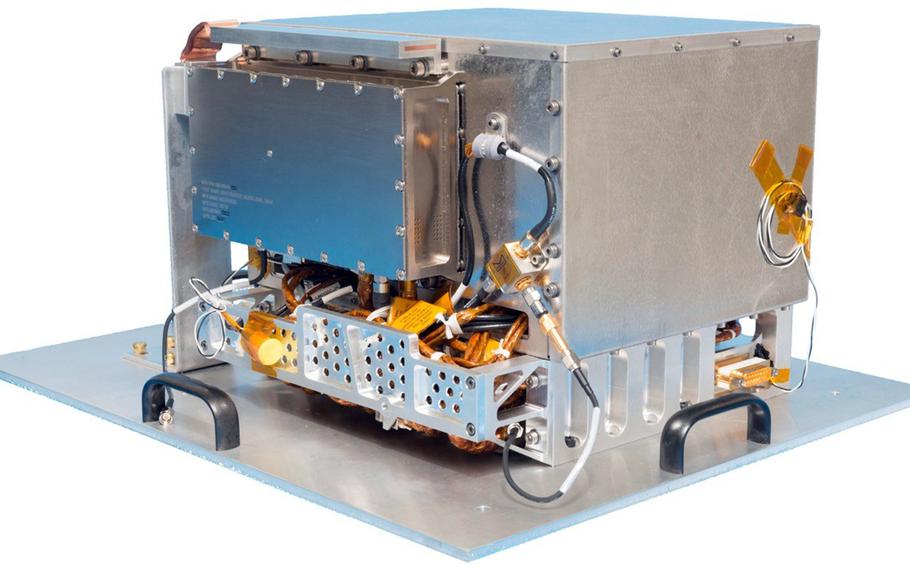
Atomic clocks are considered the most accurate means for timekeeping, according to NASA. They measure very stable and precise frequencies of light emitted by specific atoms. (NASA)
The Navy has awarded a small New York firm a $20 million contract to develop a compact, next-generation mercury ion atomic clock, the Pentagon announced recently.
Frequency Electronics Inc., of Mitchel Field, N.Y., is developing the clock for Navy applications aboard ships, aircraft and spacecraft, CEO Stan Sloane told Stars and Stripes in an email Friday.
The Office of Naval Research issued the contract, according to a Pentagon announcement Jan. 10. The completion date is Jan. 11, 2024.
The contract calls for precision timepieces suitable for Navy platforms that require better clock performance in environments that include roll, pitch, yaw, heave and vibration, Sloane wrote.
“The Mercury Ion technology is expected to improve clock stability by an order of magnitude or better over what is currently fielded in tactical platforms,” according to Sloane.
Atomic clocks are considered the most accurate means for timekeeping, according to NASA. They measure very stable and precise frequencies of light emitted by specific atoms. An atomic clock loses one second every 10 million years.
NASA already employs mercury ion clock technology in a Deep Space Atomic Clock launched into Earth’s orbit in June 2019. The technology has applications for spacecraft navigation, radio science and GPS and is 50 times more accurate than today's best navigation clocks, according to NASA’s Jet Propulsion Laboratory.
The Frequency Electronics contract calls for a compact version of the 11-by-10-by-9-inch Deep Space clock, according to a NASA factsheet. Sloane said his company’s version should measure 5-by-7-by-1.2 inches
Frequency Electronics designs, develops and manufactures high-precision timing, frequency generation and radio-frequency control products for space and terrestrial applications, according to the company website.
Its products are used in satellite payloads and in other commercial, government and military systems, including command and control, electronic warfare, missiles, manned and unmanned aircraft and wireless networks.
A team from the Jet Propulsion Laboratory and the California Institute of Technology developed the mercury ion atomic clock technology under the Defense Advance Research Project Agency’s Atomic Clock with Enhanced Stability program, Sloane said.
The Office of Naval Research did not respond to an email from Stars and Stripes seeking further information.
“We will be working in parallel with Jet Propulsion Laboratory to move the technology from experimental to production ready,” Sloane said. “We will eventually develop many varieties of these clocks that are tailored for various applications including for space, tactical military platforms and commercial use.”